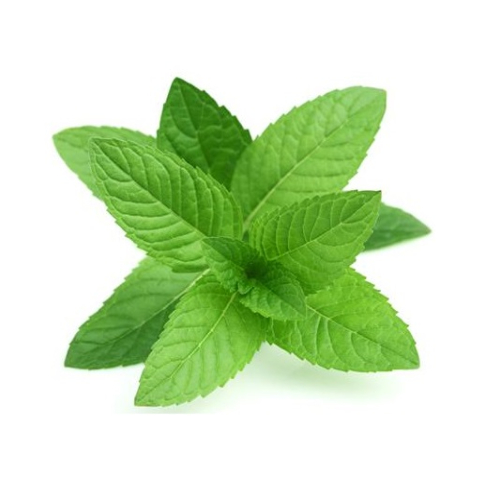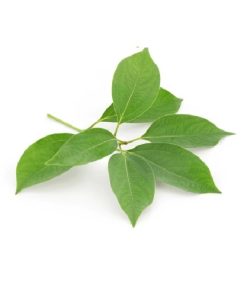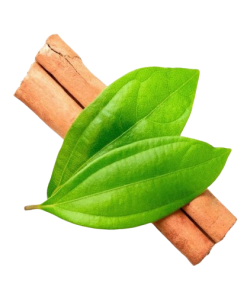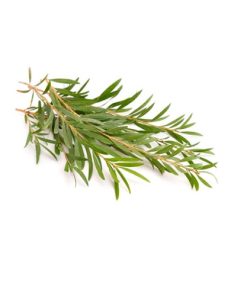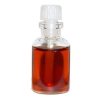Plant Description:
The peppermint plant is a summer-growing perennial with upright square stems reaching a meter in height at maturity. The plant is known for its high menthol content, so high, in fact, that menthol crystals form on the surface of the leaves. Peppermint’s origin is somewhat of a mystery, but it has been in existence for a long time – dried leaves were found in Egyptian pyramids dating from around 1000 BC. It was highly valued by the Greeks and Romans. It was first described in England in 1696 but only became popular in Western Europe in the 18th Century.
Peppermint Piperita Oil has a rich, strong, clean, fresh, minty aroma and impactful aroma. It is one of the oldest and most highly regarded herbs for soothing digestion; research has shown peppermint’s role in improving taste and smell when inhaled. Peppermint also eases nervous headaches. Menthol, its main constituent, has antibacterial properties.
Peppermint Oil Properties:
Appearance: Mobile liquid
Colour: Almost Colourless to Pale Yellow color
Odour: Typical of natural peppermint flavor
Flash point: Above 100°C
Specific gravity at 20°C: 0.890 – 0.922
Refractive index at 20°C: 1.455 – 1.465
Optical rotation: -40 to -20°
Solubility in water: Insoluble
The main components: Methol min 60%
Uses of Peppermint oil:
Uses in pharma:
1. Peppermint oil is rich in digestive properties that aid in the treatment of gastrointestinal issues such as colon spasms, indigestion, and irritable bowel syndrome. The oil is really useful to individuals who seem to have a somewhat less appetite. The oil is used as a health supplement and as a treatment for illnesses such as morning sickness, nausea, diarrhoea, and vomiting.
2. Aromatherapy oil is useful in reducing tension, pain, worry, and sadness. It is also effective for brain functioning. It can also help with muscular discomfort and headaches.
3. The oil has respiratory advantages as well. Based on particular studies, this oil is useful in treating TB as well as minimizing the chance of getting the disease. Also, this oil has a great efficacy as a cough medicine cure.
4. Peppermint oil can be used to heal some skin conditions. It could be seen as an emollient. Moreover, this oil is excellent for oral health since it may be used as an astringent or mouthwash to stop bad odour.
Use in Cosmetics:
1. The oil used in skin care products like cream, soap, moisturizer and etc. It helps to balance in the oil content by combating excess oil secretion and helps to irritated skin caused by acne or other allergies, can also be healed gradually with its consistent use.
2. It can help to promote hair growth. According to a research study this oil when use to mince, increase the number of follicle depth and overall hair growth.
Use in foods:
Peppermint oil offers a wide range of medical applications. For its menthol content, it may also be utilised as an ingredient in items such as chewing gum, toothpaste, tea, ice cream, shampoo, and cigarettes. This oil is also used as a flavour in some foods.
Caution:
Safety Information: Avoid if pregnant or breastfeeding. Do not use on babies or small children. Peppermint Oil may cause irritation to sensitive skin, however, it is rare. Important to do a patch test first, before applying in large amounts. Do not use in baths.
Specifications

SPECIFICATIONS
Product name
|
PEPPERMINT OIL
|
INCI name
|
Mentha piperita leaf oil
|
Origin
|
India
|
Batch No.
|
PEMINT0524
|
Part use
|
Leaf
|
Method
|
Steam distillation
|
Manufacturing date
|
05/2024
|
Best before
|
05/2027
|
Cas No.
|
8006-90-4
|
FEMA:
|
2848
|
No
|
Parameter
|
Specifications
|
01
|
Appearance
|
Only liquid, Almost Colouless to light yellow, Characteristic of Peppermint odour
|
02
|
Identification
|
Peppermint Oil
|
03
|
Solubility
|
Soluble in alcohol & Insoluble in water
|
04
|
Specific Gravity at 20°C
|
0.890 – 0.922
|
05
|
Refractive Index at 20°C
|
1.455 – 1.465
|
06
|
Optical Rotation at 20°C
|
-40° to -20°
|
07
|
Main Constituents
|
Menthol content >55%
|
Shelf life: Min 3 years from date of manufacture.
Storage: Store in airtight containers in cool & dry place away from light & heat.
Caution: Possible skin sensitivity. Keep out of reach of children. If you are pregnant, nursing, or under a doctor’s care, consult your physician. Avoid contact with eyes, inner ears, and sensitive areas.
MSDS

MATERIAL SAFETY DATA SHEET
(according to Regulation (EU) No. 1907/2006)
Product name: Peppermint Oil
Number: PMINT0524
1. IDENTIFICATION OF SUBSTANCE/PREPARATION & COMPANY.
Product name: Peppermint Oil
Manufacturer/Supplier: Australia Natural Products
Add: SE 51, 2 Mayfair Street, West Perth, WA 6005, Australia
Emergency telephone: +61 452101623
Email: [email protected]
2. COMPOSITION / INFORMATION ON INGREDIENTS.
Definition/Botanical Origin: Peppermint Oil is 100% pure & natural, obtained by steam distillation of the leaves of Mentha piperita original from Vietnam.
Composition: Peppermint Oil 100% pure & natural
CAS No: 8006-90-4
FEMA: 2848
INCI Name: Mentha piperita Oil
3. HAZARDS IDENTIFICATION:
This product is not hazardous. Not dangerous for the environment.
H304 May be fatal if swallowed and enters airways
H315 Causes skin irritation
H317 May cause an allergic skin reaction
H319 Causes serious eye irritation.
4. FIRST-AID MEASURES:
Inhalation: Remove from exposure site to fresh air. Keep at rest. Obtain medical attention.
Eye contact: Rinse immediately with plenty of water for at least 15 mins. Contact a doctor if symptoms persist.
Skin contact: Remove contaminated clothes. Wash thoroughly with soap & water, flush with plenty of water. If irritation persists, seek medical advice.
Ingestion: Rinse mouth out with water. Seek medical advice immediately.
Other: When assessing action take Risk & Safety Phrases into account (Section 15).
5. FIRE FIGHTING MEASURES.
Extinguishing media Use CO2, Dry Powder or Foam type Extinguishers, spraying extinguishing media to base of flames. Do not use direct water jet on burning material.
Special measures: Avoid vapour inhalation. Keep away from sources of ignition. Do not smoke. Wear positive pressure self-contained breathing apparatus & protective clothing.
Extinguishing procedures: Closed containers may build up pressure when exposed to heat and should be cooled with water spray.
6. ACCIDENTAL RELEASE MEASURES.
Personal precautions: Avoid inhalation & direct contact with skin & eyes. Use individual protective equipment (safety glasses, waterproof-boots, suitable protective clothing) in case of major spillages.
Environment precautions: Keep away from drains, soils, surface & groundwaters.
Cleaning up methods Remove all potential ignition sources. Contain spilled material. Cover for spillages: with an inert or non-combustible inorganic absorbent material, sweep up and remove to an approved disposal container. Observe state, federal & local disposal regulations.
7. HANDLING & STORAGE.
Precautions in handling: Apply good manufacturing practice & industrial hygiene practices, ensuring proper ventilation. Observe good personal hygiene, and do not eat, drink or smoke whilst handling.
Storage conditions: Store in tightly closed original container, in a cool, dry & ventilated area away from heat sources & protected from light. Keep air contact to a minimum.
Fire protection: Keep away from ignition sources & naked flames. Take precautions to avoid static discharges in working area.
8. EXPOSURE CONTROLS/PERSONAL PROTECTION.
Respiratory protection: Avoid breathing product vapour. Apply local ventilation where possible.
Ventilation: Ensure good ventilation of working area.
Hand protection: Avoid all skin contact. Use chemically resistant gloves if required.
Eye protection: Use safety glasses.
Work/Hygiene practices: Wash hands with soap & water after handling.
9. PHYSICAL & CHEMICAL PROPERTIES.
Appearance: Mobile liquid
Colour: Almost Colourless to Pale Yellow color
Odour: Typical of natural peppermint flavor
Flash point: Abobe 100°C
Specific gravity at 20°C: 0.890 – 0.922
Refractive index at 20°C: 1.455 – 1.465
Optical rotation: -40 to -20°
Solubility in water: Insoluble
10. STABILITY & REACTIVITY.
Reactivity: It presents no significant reactivity hazards, by itself or in contact with water. Avoid contact with strong acids, alkali or oxidising agents.
Decomposition: Liable to cause smoke & acrid fumes during combustion: carbon monoxide, carbon dioxide & other non-identified organic compounds may be formed.
11. TOXICOLOGICAL INFORMATION.
According to current information, not classed as hazardous to health in normal industrial use.
12. ECOLOGICAL INFORMATION.
Biodegradability: Data not available
Precautions: Prevent surface contamination of soil, ground & surface water.
13. DISPOSAL CONSIDERATIONS.
Avoid disposing to drainage systems and into the environment. Seek expert advice.
14. TRANSPORT REGULATIONS.
Shipping by road (ADR/RID): This product is not considered as dangerous goods
Shipping by air (IATA): This product is not considered as dangerous goods
Shipping by sea (IMDG): This product is not considered as dangerous goods
UN number: not regulated
UN proper shipping name: not regulated
Transportation hazard class: not regulated
Label: Peppermint Oil.
15. REGULATORY INFORMATION. According to Directive 88/379/EEC
Hazards: Harmful
Symbols: n/a
Risk Phrases: Harmful if swallowed
Safety Phrases: If swallowed seek medical advice immediately and show the container / label.
16. OTHER INFORMATION.
Cosmetics Directive – 7th Amendment – Not Restricted
Check maximum usage levels for skin care products.
PACKAGING:
Type
|
Suitability
|
Glass
|
Yes
|
Lacquer lined steel/tin
|
Yes
|
Aluminum
|
Yes
|
HPPE
|
Yes
|
SHELF LIFE:
Best before of 36 months from the date of manufacturing.
Q.C. REQUIREMENTS.
In-line with general product specification. Always satisfy suitability for specific application.
The data provided in this material safety data sheet is meant to represent typical data/analysis for this product and is correct to the best of our knowledge. The data was obtained from current and reliable sources, but is supplied without warranty, expressed or implied, regarding its’ correctness or accuracy. It is the user’s responsibility to determine safe conditions for the use of this product, and to assume liability for loss, injury, damage or expense arising from improper use of this product. The information provided does not constitute a contract to supply to any specification, or for any given application, and buyers should seek to verify their requirements and product use.
GC/MS


CERTIFICATE OF ANALYSIS
No: 01/ 2024/ BODER
Product name
|
BENZOIN SIAM OIL
|
Botanical Source
|
Starax tonkinensis
|
Manufacturing date
|
01/2024
|
Expiry date
|
01/2027
|
Origin
|
Vietnam
|
Batch No.
|
BODER0124
|
Cas No.
|
9000-72-0
|
FEMA
|
2133
|
No
|
Specifications
|
Standards
|
Results
|
01
|
Appearance
|
Viscous to paste liquid
|
Complies
|
02
|
Colour
|
Orange-amber to brown resinous mass
|
Complies
|
03
|
Odour
|
Characteristic odour of balsamic, sweet, vanilla odour
|
Complies
|
04
|
Solubility
|
Soluble in alcohol & Insoluble in water
|
Complies
|
05
|
Chemical composition
|
Proplylene Glycol, (PG 50%), Benzoic acid, Coniferyl benzoate, Vanillin, Benzyl benzoate
|
Complies
|
06
|
Conclusion
|
Comply all of the standards for Benzoin Siam Oil.
|
Storage & Cautions
Store at ambient temperature, dry and well-ventilated area, away from heat source and protected from light.
Avoid contact with skin & eyes.


